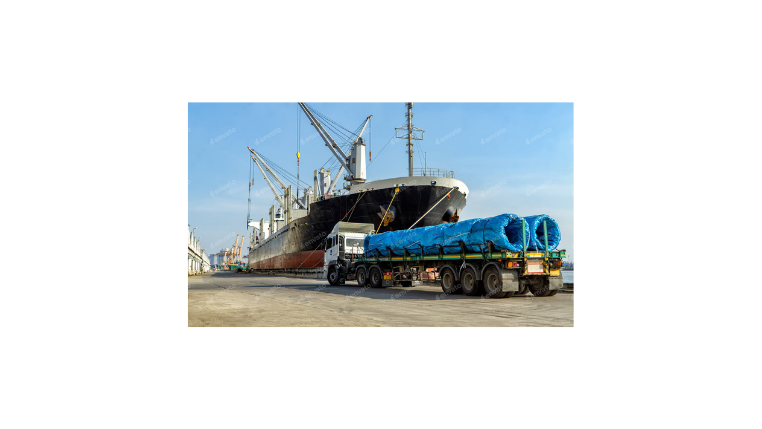The Green Wave: How Sustainable Transportation is Revolutionizing Global Logistics
The logistics industry is at a crossroads, facing unprecedented pressure to decarbonize from regulators, investors, and consumers alike. Green transportation is no longer just an environmental mandate; it has become a powerful driver of innovation, efficiency, and competitive advantage. Businesses embracing this shift are discovering that sustainable practices not only minimize their environmental impact but also lead to significant cost savings and improved supply chain performance. This article explores the key technologies and strategies shaping this sustainable future and how your business can get on board.
Why Green Transportation is No Longer a Niche, But a Necessity
The push towards sustainable logistics is fueled by a convergence of powerful forces that make it a strategic imperative for businesses of all sizes.
- Regulatory Pressure: Governments worldwide are implementing stricter emissions standards and carbon pricing schemes. Initiatives like the European Union's "Fit for 55" package and international maritime regulations (IMO) are making carbon-intensive operations more expensive and less compliant.
- Consumer and Investor Demand: Today’s consumers increasingly prefer to buy from brands with strong environmental credentials. Similarly, investors are channeling capital towards companies with robust ESG (Environmental, Social, and Governance) performance, making sustainability a key factor in financial health.
- Economic Benefits: Sustainability and profitability are not mutually exclusive. Green logistics often leads to direct cost savings through reduced fuel consumption, optimized routes, and lower carbon taxes. Efficiency is the cornerstone of both green and lean supply chains.
The Innovations Driving the Green Revolution in Logistics
A wave of technological advancement is providing the tools needed to build a cleaner, more efficient transportation network.
1. The Electrification of Road Freight
Electric vehicles (EVs) are leading the charge in decarbonizing road transport. While electric cargo vans are already transforming last-mile delivery in cities, the development of heavy-duty electric trucks for long-haul routes is rapidly advancing. The key benefits are zero tailpipe emissions, quieter operation, and significantly lower fuel and maintenance costs. The primary challenge remains the build-out of a robust, high-speed charging infrastructure.
2. Alternative Fuels for Ocean and Air
Decarbonizing ocean and air freight is more complex, but several promising alternatives to fossil fuels are emerging:
- Biofuels: Sustainable Aviation Fuel (SAF) and maritime biofuels, derived from sources like waste oils and agricultural residue, can be used as "drop-in" fuels in existing engines to immediately reduce net carbon emissions.
- Green Hydrogen and Ammonia: Considered long-term solutions, green hydrogen and its derivative, ammonia, can be produced using renewable energy and burn without releasing CO2. They represent a path to truly zero-emission shipping.
- LNG (Liquefied Natural Gas): Often viewed as a transitional fuel, LNG emits less CO2 and pollutants than traditional bunker fuel, but it is not a zero-carbon solution and concerns about methane slip remain.
3. The Power of Intermodal and Rail Transport
One of the most effective green strategies available today is the modal shift. Moving long-haul freight from trucks to rail is significantly more fuel-efficient and produces far fewer emissions per ton-mile. Optimizing supply chains to maximize the use of rail for the longest leg of the journey is a powerful lever for decarbonization.
Practical Strategies for Building a Greener Supply Chain
Beyond adopting new technologies, businesses can implement several strategies to make their logistics operations more sustainable right now.
- Measure Your Carbon Footprint: The first rule of management is to measure. Use carbon calculation tools to establish a baseline for your company’s logistics emissions. This allows you to identify hotspots and track progress.
- Optimize, Optimize, Optimize: Use technology to your advantage. Advanced route planning software can minimize miles traveled and idle time. Load consolidation ensures that no truck or container is sent out half-empty.
- Collaborate with Sustainable Partners: When choosing your freight forwarders, carriers, and third-party logistics (3PL) providers, make sustainability a key selection criterion. Partner with companies that share your commitment and have invested in greener fleets and practices.
- Invest in Sustainable Packaging: Reduce waste and transportation emissions by using lighter, recycled, and recyclable materials. Eliminating empty space in boxes with right-sized packaging can also significantly increase shipping density.
Conclusion
In conclusion, the transition to green transportation is an essential journey for the logistics industry. It is a multifaceted effort that combines groundbreaking technologies with smart, efficiency-focused operational strategies. The businesses that lead this charge will not only contribute to a healthier planet but will also build the resilient, cost-effective, and reputable supply chains that will define success in the 21st century. Executing these strategies requires robust digital tools. Modern logistics platforms like Modaltrans provide the necessary capabilities for advanced route optimization to cut fuel consumption and powerful analytics to measure, manage, and report on your carbon footprint, turning sustainability goals into operational reality.










